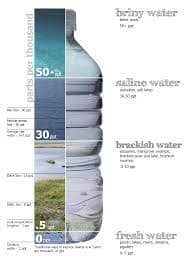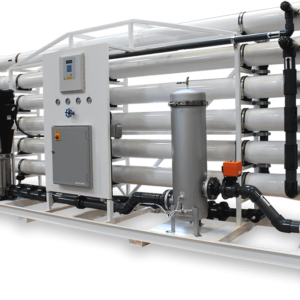Description
Brackish Water Salinity
Brackish water is a mixture of freshwater and saltwater that is found in estuaries, coastal areas, and some inland areas. It has a salinity level that is higher than freshwater but lower than seawater. Brackish water is often used for industrial purposes, as well as for agriculture, aquaculture, and drinking water. In this article, we will discuss brackish water salinity, including its definition, importance, and applications.
What is Brackish Water Salinity?
Brackish water salinity refers to the amount of salt in brackish water. It is typically measured in parts per thousand (ppt) or grams per liter (g/L). The salinity of brackish water can vary widely depending on factors such as location, temperature, and rainfall. Generally, brackish water has a salinity level between 0.5 ppt and 30 ppt.
Importance of Brackish Water Salinity
Brackish water is an important resource for many industries and applications. For example, it is often used in agriculture for irrigation and crop production. Brackish water is also used in aquaculture for fish and shrimp farming. Additionally, brackish water can be treated for use as drinking water in areas where freshwater is scarce.
Understanding brackish water salinity is important for managing these applications. For example, certain crops may require a specific salinity level for optimal growth, and fish and shrimp require specific salinity levels for survival. Additionally, treatment methods for drinking water may vary depending on the salinity level of the source water.
Applications of Brackish Water Salinity
Agriculture
Brackish water is often used in agriculture for irrigation and crop production. In areas where freshwater is scarce, brackish water can be a valuable resource for maintaining crop yields. However, not all crops are suitable for irrigation with brackish water, as some may be sensitive to high salt levels.
Aquaculture
Brackish water is also used in aquaculture for fish and shrimp farming. Species such as tilapia, catfish, and shrimp can be grown in brackish water, which can be more cost-effective than using freshwater. However, different species have different salinity requirements, so careful management is necessary to ensure optimal growth and survival rates.
Drinking Water
In areas where freshwater is scarce, brackish water can be treated for use as drinking water. However, treatment methods may vary depending on the salinity level of the source water. Reverse osmosis and nanofiltration are two common methods of treating brackish water for drinking purposes.
Factors Affecting Brackish Water Salinity
The salinity of brackish water can vary widely depending on a variety of factors. Some of the most important factors include:
- Location: Brackish water in coastal areas may have a higher salinity level than brackish water in inland areas.
- Temperature: Warmer temperatures can cause evaporation, which can increase the salinity level of brackish water.
- Rainfall: Heavy rainfall can dilute the salinity level of brackish water, while drought conditions can increase it.
- Tides: Tidal movements can affect the salinity level of brackish water in estuaries and coastal areas.
Conclusion
In conclusion, brackish water salinity refers to the amount of salt in brackish water, which can vary widely depending on location, temperature, and other factors. Brackish water is an important resource for many industries and applications, including agriculture, aquaculture, and drinking water. Understanding brackish water salinity is important for managing these applications and ensuring optimal growth and survival rates.
FAQs
- What is the salinity level of brackish water? The salinity of brackish water can vary widely depending on factors such as location, temperature, and rainfall. Generally, brackish water has a salinity level between 0.5 ppt and 30 ppt.
- What is brackish water used for? Brackish water is used for a variety of applications, including agriculture, aquaculture, and drinking water.
- Can all crops be irrigated with brackish water? Not all crops are suitable for irrigation with brackish water, as some may be sensitive to high salt levels.
- What species can be grown in brackish water? Species such as tilapia, catfish, and shrimp can be grown in brackish water, but different species have different salinity requirements.
- How is brackish water treated for drinking purposes? Reverse osmosis and nanofiltration are two common methods of treating brackish water for drinking purposes.





Reviews
There are no reviews yet.